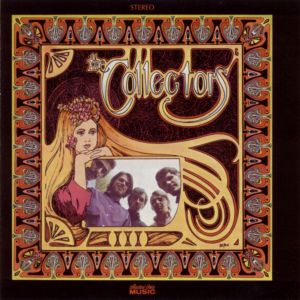
- Format: MP3

The first five tracks, 'What Is Love; She (Will-O-the-Wind); Howard Christman’s Older; Lydia Purple', and 'One Act Play', are cool enough, but they’re mere preamble for the album centerpiece, 'What Love (Suite)', a 19-minute head trip of sax, flute, Gregorian chant and psychedelic guitar. You gotta hear this!
Originally formed in 1964 as the Classics (adopting the name CFUN Classics when they gigged to promote local Vancouver, BC radio station CFUN-AM), the group were featured as the house band on Let's Go, a weekly TV show. In 1965, they released two singles as the Canadian Classics — "Til I Met You" (Jaguar 2002A) and "I Don't Know" (Valiant 723). The band reinvented themselves as the Collectors in 1966. With former horn player Howie Vickers handling lead vocals, they cut "Eyes" and "Don't Feel Bad" — both of which later appeared on the History of Vancouver Rock and Roll, Volume 4 (VRCA 004; 1991.) "Eyes" — a fine folk tune seasoned with tasty guitar and just a dash of psychedelia — is easily the better track. "Don't Feel Bad" has a vague "On Broadway" feel. More elaborately produced, it also seems a less genuine effort. By 1967, in addition to lead singer Howie Vickers, the Collectors included Claire Lawrence (tenor sax, organ, recorder, flute), Bill Henderson (lead guitar), Glenn Miller (bass) and Ross Turney (drums) — the band's "classic" line-up. Recordings from this period include the Vancouver smash hit "Lookin' at a Baby" (New Syndrome 16, 1967, subsequently reissued on the History of Vancouver Rock, Volume 3 VRCA 001, 1983) and two other 45s, "Fisherwoman" and "Fat Bird." "Lookin' at a Baby" is MOR flute-pop floating amidst heady clouds of psychedelia. Vickers' departure from the Collectors in 1969 necessitated Henderson's promotion to lead vocalist. Eventually, the band rechristened themselves Chilliwack.